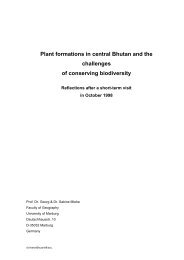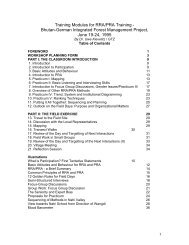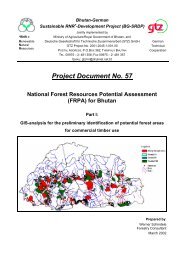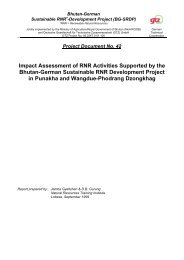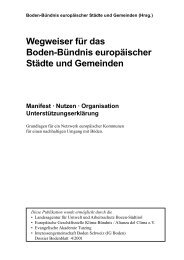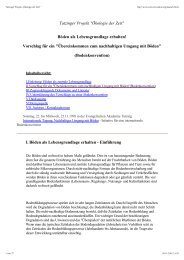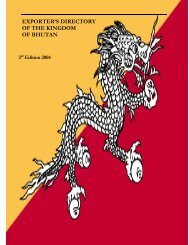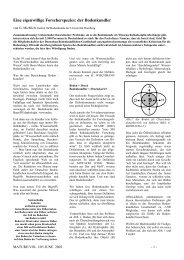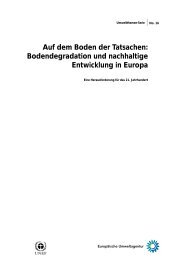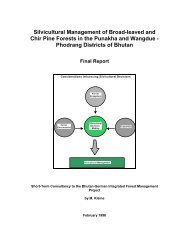GTZ Project Document No. 51 Report on Nahi Baseline Survey
GTZ Project Document No. 51 Report on Nahi Baseline Survey
GTZ Project Document No. 51 Report on Nahi Baseline Survey
Create successful ePaper yourself
Turn your PDF publications into a flip-book with our unique Google optimized e-Paper software.
<strong>Nahi</strong> <strong>Baseline</strong> <strong>Survey</strong> April- May 20012.3.1 Crop ActivitiesThe crop producti<strong>on</strong> is the principal activity of the households in the valley. The cerealcrops grown in associati<strong>on</strong> are paddy, wheat, barley, mustard, maize and some buckwheatcultivated in the wetland and dry land. As the staple food crop, paddy is the main summerwetland crop grown by all the households in the valley.Five different land use types were identified (Table 2.6) in the valley with wetland as themost dominant land use type that covers about (70%) followed by dry land (17%),kitchen garden (6%), Tsheri (4%) and orchard (4%). The winter wetland crops includewheat, barley, mustard, some buckwheat in the autumn cultivated by a few households.In the dryland mostly maize, barley, wheat and some buckwheat are cultivated.Table 2-6 Land use types in langdos in the geogTotalLangdos% ofcoverageHebisa Esawom Esagom NabisaLand use (Langdos)Wetland 143.3 100 136.63 136.5 <str<strong>on</strong>g>51</str<strong>on</strong>g>6.43 70Dryland 38 20.5 16.5 50.8 125.8 17Tsheri 13.5 8 6.5 3.6 31.6 4Kitchen garden 12.9 6 10.05 13.85 42.8 6Orchard 8.4 2.01 1.14 8.4 19.95 3Total 216.1 136.<str<strong>on</strong>g>51</str<strong>on</strong>g> 170.82 213.15 736.58 100Source: RNR Census 2001The Sokshing (village wood lot) from where they collect the leaf litter is not comm<strong>on</strong> inthe valley, <strong>on</strong>ly 16 langdos is recorded in Nabesa and about 3.4 langdos in Esagom. Theupper valley (Esagom and Nabesa) has about 333 acres of forest grazing land (tsamdrok)and about 300 acres by the lower valley (Esawom/Hali)The estimated annual producti<strong>on</strong> (Table 2.7) of five major crops cultivated in the valleybased <strong>on</strong> the informati<strong>on</strong> collected during RNR Census 2001 (83 households werecovered) indicate the yield to be much lower than the average yield obtained from <strong>on</strong>eacre or hectare. For example, the annual yield of paddy and wheat, the two mostimportant cereal crops in the valley 18.20 t<strong>on</strong>s and wheat 2.2 t<strong>on</strong>s respectively are muchbelow the average yield.Table 2-7 Annual producti<strong>on</strong> of five different cropsCrops Quantity Land Type Seas<strong>on</strong>Paddy 18.20 t<strong>on</strong>nes Wetland Summer-AutumnWheat 2.2 t<strong>on</strong>nes Wetland / Dryland Winter-SpringBarley 1.6 t<strong>on</strong>nes Wetland/Dryland Spring-summerAutumn-winterMustard 9.66 quintal Wetland Winter –springMaize 3.36 quintal Dryland Spring-summerSource: RNR Census 200114



